68 posts
• Page 2 of 3 • 1, 2, 3
thoughts on lack of short swords
-

Nicole Elocin - Posts: 3390
- Joined: Sun Apr 15, 2007 9:12 am
I don't understand why they didn't have throwing weapons. Look at New Vegas. The funtion of throwing weapons was worked there, so I'm sure Beth could have done the same. I mean I don't feel right being a thief charcter without some poisoned throwing knives....Mayeb it's just me, but when I wear the guildmasters armor I want to feel like http://www.youtube.com/watch?v=TPNDIAku-L0&feature=player_detailpage#t=514s...
...

A positive mention of New Vegas and a reference piece from Dark Alliance.
-
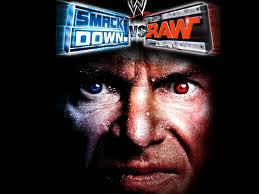
Shianne Donato - Posts: 3422
- Joined: Sat Aug 11, 2007 5:55 am
I miss the Short Swords personally but when I'm playing Skyrim I don't notice them gone.
-

Honey Suckle - Posts: 3425
- Joined: Wed Sep 27, 2006 4:22 pm
Like always, variety is never a bad thing. I loved SS; they complimented my SpellSword pretty well.
-

Alex Vincent - Posts: 3514
- Joined: Thu Jun 28, 2007 9:31 pm
Its not a huge deal I guess.. But when it comes down to it theres not a lot of missing things in skyrim that are a "huge deal," yet when you add them all together you have a game that is overshadowed by previous game titles.
Its hard to justify adding short swords when the game has an incredibly childish and linear sense of weapon "tiers." and a highly limtied selection of weapons. If the game had polearms, morning stars, clubs, longbows & short bows, crossbows, throwing axes, etc and was missing short swords then it'd be a HUGE deal, but when everything else is missing anyways I dont think short swords are at the top of the list.
Its hard to justify adding short swords when the game has an incredibly childish and linear sense of weapon "tiers." and a highly limtied selection of weapons. If the game had polearms, morning stars, clubs, longbows & short bows, crossbows, throwing axes, etc and was missing short swords then it'd be a HUGE deal, but when everything else is missing anyways I dont think short swords are at the top of the list.
-

chirsty aggas - Posts: 3396
- Joined: Wed Oct 04, 2006 9:23 am
Also not true. They are way too big. A medieval one hander is about 3 lbs, a bastard about 4 lbs, a two hander about 5 lbs. Early war axes were very light with blades only a few millimeters thick. The head of a mace was about the size of your fist, not your head. It doesn't take that much mass to kill a person. Swinging fast is more important than the weight of the weapon. Back in the day when their lives depended on it people understood that - seems to have been lost in the age of anime  .
.
 .
.Swords weighed more than 3lbs. I've picked one up before
 I think what you are talking about were rapiers. Rapiers were light, and fast. Too be that light, the blade had to be very thing. But the purpose of the rapier, originally, wasn't necessarily to be light or fast, it was to cut plate armor off of the wearer. Slice the straps, armor drops, stab the warrior. Or at least that's what I read once. Same book also said Two-handed swords, zweihanders, were made to unhorse cavalry, like a pike, but still be used in hand to hand melee. Or be more useful than a pike in hand to hand melee. I've never touched either weapon, and haven't thought about it much since I read it. Seemed logical.
I think what you are talking about were rapiers. Rapiers were light, and fast. Too be that light, the blade had to be very thing. But the purpose of the rapier, originally, wasn't necessarily to be light or fast, it was to cut plate armor off of the wearer. Slice the straps, armor drops, stab the warrior. Or at least that's what I read once. Same book also said Two-handed swords, zweihanders, were made to unhorse cavalry, like a pike, but still be used in hand to hand melee. Or be more useful than a pike in hand to hand melee. I've never touched either weapon, and haven't thought about it much since I read it. Seemed logical.-

Tinkerbells - Posts: 3432
- Joined: Sat Jun 24, 2006 10:22 pm
There are crossbows. Those Dwarven Spheres have them, too bad we cannot rip their arm off and use it.
All the crap I pick up in the ruins, I should be able to build a Dwarven Sphere follower.
-

Mrs shelly Sugarplum - Posts: 3440
- Joined: Thu Jun 15, 2006 2:16 am
Swords weighed more than 3lbs. I've picked one up before  I think what you are talking about were rapiers. Rapiers were light, and fast. Too be that light, the blade had to be very thing. But the purpose of the rapier, originally, wasn't necessarily to be light or fast, it was to cut plate armor off of the wearer. Slice the straps, armor drops, stab the warrior. Or at least that's what I read once. Same book also said Two-handed swords, zweihanders, were made to unhorse cavalry, like a pike, but still be used in hand to hand melee. Or be more useful than a pike in hand to hand melee. I've never touched either weapon, and haven't thought about it much since I read it. Seemed logical.
I think what you are talking about were rapiers. Rapiers were light, and fast. Too be that light, the blade had to be very thing. But the purpose of the rapier, originally, wasn't necessarily to be light or fast, it was to cut plate armor off of the wearer. Slice the straps, armor drops, stab the warrior. Or at least that's what I read once. Same book also said Two-handed swords, zweihanders, were made to unhorse cavalry, like a pike, but still be used in hand to hand melee. Or be more useful than a pike in hand to hand melee. I've never touched either weapon, and haven't thought about it much since I read it. Seemed logical.
 I think what you are talking about were rapiers. Rapiers were light, and fast. Too be that light, the blade had to be very thing. But the purpose of the rapier, originally, wasn't necessarily to be light or fast, it was to cut plate armor off of the wearer. Slice the straps, armor drops, stab the warrior. Or at least that's what I read once. Same book also said Two-handed swords, zweihanders, were made to unhorse cavalry, like a pike, but still be used in hand to hand melee. Or be more useful than a pike in hand to hand melee. I've never touched either weapon, and haven't thought about it much since I read it. Seemed logical.
I think what you are talking about were rapiers. Rapiers were light, and fast. Too be that light, the blade had to be very thing. But the purpose of the rapier, originally, wasn't necessarily to be light or fast, it was to cut plate armor off of the wearer. Slice the straps, armor drops, stab the warrior. Or at least that's what I read once. Same book also said Two-handed swords, zweihanders, were made to unhorse cavalry, like a pike, but still be used in hand to hand melee. Or be more useful than a pike in hand to hand melee. I've never touched either weapon, and haven't thought about it much since I read it. Seemed logical.Hi - going to respectfully disagree. No need to believe what I say as there is lots if interesting info on the net if you want to learn more.
Rapiers were not lighter than one handed medieval swords. They weighed about the same. It was the weight distribution that was radically different with the weight of the rapier shifted towards the hilt. Rapiers were never meant to face armored opponents. Rapiers were personal arming swords and were not generally used on the battlefield. Not enough stopping power.
The two handers to which you refer would be more 15th/16th century weapons. They would be heavier (up to 7 lbs) and would be used for all sorts of things - against cavalry, a pike wall, etc. These were not medieval weapons.
-

lolly13 - Posts: 3349
- Joined: Tue Jul 25, 2006 11:36 am
Swords weighed more than 3lbs. I've picked one up before  I think what you are talking about were rapiers. Rapiers were light, and fast. Too be that light, the blade had to be very thing. But the purpose of the rapier, originally, wasn't necessarily to be light or fast, it was to cut plate armor off of the wearer. Slice the straps, armor drops, stab the warrior. Or at least that's what I read once. Same book also said Two-handed swords, zweihanders, were made to unhorse cavalry, like a pike, but still be used in hand to hand melee. Or be more useful than a pike in hand to hand melee. I've never touched either weapon, and haven't thought about it much since I read it. Seemed logical.
I think what you are talking about were rapiers. Rapiers were light, and fast. Too be that light, the blade had to be very thing. But the purpose of the rapier, originally, wasn't necessarily to be light or fast, it was to cut plate armor off of the wearer. Slice the straps, armor drops, stab the warrior. Or at least that's what I read once. Same book also said Two-handed swords, zweihanders, were made to unhorse cavalry, like a pike, but still be used in hand to hand melee. Or be more useful than a pike in hand to hand melee. I've never touched either weapon, and haven't thought about it much since I read it. Seemed logical.
 I think what you are talking about were rapiers. Rapiers were light, and fast. Too be that light, the blade had to be very thing. But the purpose of the rapier, originally, wasn't necessarily to be light or fast, it was to cut plate armor off of the wearer. Slice the straps, armor drops, stab the warrior. Or at least that's what I read once. Same book also said Two-handed swords, zweihanders, were made to unhorse cavalry, like a pike, but still be used in hand to hand melee. Or be more useful than a pike in hand to hand melee. I've never touched either weapon, and haven't thought about it much since I read it. Seemed logical.
I think what you are talking about were rapiers. Rapiers were light, and fast. Too be that light, the blade had to be very thing. But the purpose of the rapier, originally, wasn't necessarily to be light or fast, it was to cut plate armor off of the wearer. Slice the straps, armor drops, stab the warrior. Or at least that's what I read once. Same book also said Two-handed swords, zweihanders, were made to unhorse cavalry, like a pike, but still be used in hand to hand melee. Or be more useful than a pike in hand to hand melee. I've never touched either weapon, and haven't thought about it much since I read it. Seemed logical.Hi - going to respectfully disagree. No need to believe what I say as there is lots if interesting info on the net if you want to learn more.
Rapiers were not lighter than one handed medieval swords. They weighed about the same. It was the weight distribution that was radically different with the weight of the rapier shifted towards the hilt. Rapiers were never meant to face armored opponents. Rapiers were personal arming swords and were not generally used on the battlefield. Not enough stopping power.
The two handers to which you refer would be more 15th/16th century weapons. They would be heavier (up to 7 lbs) and would be used for all sorts of things - against cavalry, a pike wall, etc. These were not medieval weapons.
Rapiers were not lighter than one handed medieval swords. They weighed about the same. It was the weight distribution that was radically different with the weight of the rapier shifted towards the hilt. Rapiers were never meant to face armored opponents. Rapiers were personal arming swords and were not generally used on the battlefield. Not enough stopping power.
The two handers to which you refer would be more 15th/16th century weapons. They would be heavier (up to 7 lbs) and would be used for all sorts of things - against cavalry, a pike wall, etc. These were not medieval weapons.
Also be carefull about "personal experience". I know people who collect swords, both real and reproduction.
I have held both originals and reproductions/stage steel.
The originals were light and balanced. They had to be, as your life depended on it.
Cheap modern reproductions can be heavy and unbalanced, as many only need to look the part.
Back on topic: the more weapons the better. The theory someone earlier had about "my character might not have the
skill to use every weapon in the game, so those weapons shouldn't exist" doesn't hold water.
Guess what: you might just have to make actual choices in character creation and leveling.
It is (supposed to be) an RPG after all.
-
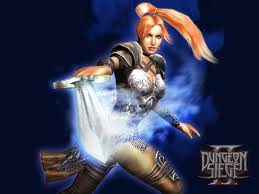
Helen Quill - Posts: 3334
- Joined: Fri Oct 13, 2006 1:12 pm
Also be carefull about "personal experience". I know people who collect swords, both real and reproduction.
I have held both originals and reproductions/stage steel.
The originals were light and balanced. They had to be, as your life depended on it.
Cheap modern reproductions can be heavy and unbalanced, as many only need to look the part.
I have held both originals and reproductions/stage steel.
The originals were light and balanced. They had to be, as your life depended on it.
Cheap modern reproductions can be heavy and unbalanced, as many only need to look the part.

The only exception were ceremonial swords which tended to be very heavy and, sometimes, disproportionately long (you know, size matter when you're a noble engaged in... pissing contests with your peers). These swords had heavy ornate hilts, handguards and pommels and, since they were rarely used, they survived better than the tools used for war. They also make a better display in a museum case than some rusty, gloomy old cutlass used to tear humans limbs apart. Most reproduction are influenced by these 'fake' weapons mostly because of the good looks and due to some dose of ignorance about fencing and sword making.
-
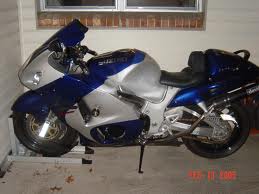
Ebony Lawson - Posts: 3504
- Joined: Fri Feb 16, 2007 11:00 am
forget short sword only weapon what is really missibng is the spear , the real spear i mean the one you use one handed to stab your opponents while blocking his attacks with your shield
Since these nords are loosely based on the germanic tribes of late roman and pre holy roman empire i am amazed they not in the game since that was the meain weapon used in combat , since swords were too expensive too make or the iron qualikty wasn't good enough for a real good sword
most of those germanic myths are with heroes who do not use a sword but are using a spear as their main weapon
A shame really
Since these nords are loosely based on the germanic tribes of late roman and pre holy roman empire i am amazed they not in the game since that was the meain weapon used in combat , since swords were too expensive too make or the iron qualikty wasn't good enough for a real good sword
most of those germanic myths are with heroes who do not use a sword but are using a spear as their main weapon
A shame really
-
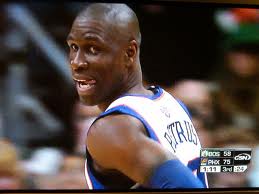
Kevin S - Posts: 3457
- Joined: Sat Aug 11, 2007 12:50 pm
Back to short swords - shameless plug here:
http://skyrim.nexusmods.com/downloads/file.php?id=8752
It has a Xiphos, Kopis, and Gladius in the collection.
http://skyrim.nexusmods.com/downloads/file.php?id=8752
It has a Xiphos, Kopis, and Gladius in the collection.
-
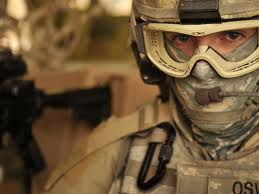
Harinder Ghag - Posts: 3405
- Joined: Wed Jan 17, 2007 11:26 am
Short swords are for stabbing/thrusting as the only attack we have is swing there wouldnt be much point in including them.
 Daggers are generally for stabbing too
Daggers are generally for stabbing too-
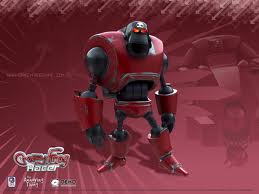
Laura Elizabeth - Posts: 3454
- Joined: Wed Oct 11, 2006 7:34 pm
considering the speed-damage offset thing is already used for axes and maces, there's no reason to differentiate shortswords.
Also they were categorized as daggers which was dumb.
Also they were categorized as daggers which was dumb.
-

Maya Maya - Posts: 3511
- Joined: Wed Jul 05, 2006 7:35 pm
I never used short swords 
But well,was goldbrand a short sword? i used tantos in morrowind

But well,was goldbrand a short sword? i used tantos in morrowind
-

Amelia Pritchard - Posts: 3445
- Joined: Mon Jul 24, 2006 2:40 am
I never used short swords 
But well,was goldbrand a short sword? i used tantos in morrowind

But well,was goldbrand a short sword? i used tantos in morrowind
-
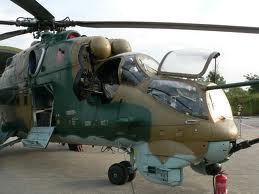
Shaylee Shaw - Posts: 3457
- Joined: Wed Feb 21, 2007 8:55 pm
 Daggers are generally for stabbing too
Daggers are generally for stabbing tooSpeaking of stabbing... I miss stabbing! Why does every attack swing?
(with the exectipn of power attacking with a dagger in the off hand)
Morrowind's combat was, for lack of better terms, wonderfully stabby.
-
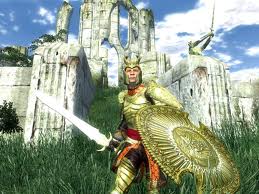
Grace Francis - Posts: 3431
- Joined: Wed Jul 19, 2006 2:51 pm
Lack of short swords is beyond lame. Visually, some are still there. The Iron Sword is pretty short, and the Dwarven Dagger is pretty big. But still... I'd imagine the reason there's no Shortswords doesn't even boil down to mechanical issues, they simply felt their time could be spent elsewhere, instead of creating an ~essentially~ superfluous set of weapons. Still, I would have liked to have a sword as fast as a dagger, with the ability to benefit from One-handed equipment, but with the same range issues and weight penalties (inability to stagger) as daggers, and no 15x critical attack.
Going one step further though, to truly bring them into a distinct subclass of their own, a hightened critical hit rate similar to Valdr's lucky dagger but lower base damage than even daggers. Making them useful only through specialization. (This assuming that the weapon specialization perks are ever made useful)
Going one step further though, to truly bring them into a distinct subclass of their own, a hightened critical hit rate similar to Valdr's lucky dagger but lower base damage than even daggers. Making them useful only through specialization. (This assuming that the weapon specialization perks are ever made useful)
-

Angel Torres - Posts: 3553
- Joined: Thu Oct 25, 2007 7:08 am
I agree with Skooma_Fiend, the daggers are pretty big. I do miss the Elven shortsword from Oblivion (an Elven bow, an Elven shortsword and a light iron (enchanted) shield were my favorites).
Not a huge fan of the Elven weapons in Skyrim. They looked better, more "graceful?" in Oblivion.
Not a huge fan of the Elven weapons in Skyrim. They looked better, more "graceful?" in Oblivion.
-

Lauren Denman - Posts: 3382
- Joined: Fri Jun 16, 2006 10:29 am
I actually think the Glass Weapons are perfect*. My only beef is the Axe is a double-headed axe. It would have looked a lot better with only one blade.
*One glaring issue is on the Glass Swords, where the top of the blade begins to fan out in the style of Skyrim's Glass weapons, there's a visible seam where two pieces appear "Glued" together. Really an eyesore, I can't help but notice it every time...
*One glaring issue is on the Glass Swords, where the top of the blade begins to fan out in the style of Skyrim's Glass weapons, there's a visible seam where two pieces appear "Glued" together. Really an eyesore, I can't help but notice it every time...
-

Juan Suarez - Posts: 3395
- Joined: Sun Nov 25, 2007 4:09 am
@Criminal_Scum: you are right that there is no mechanical reason for the exclusion of short swords. In my mod each sword as distinct values for reach, speed and damage. The Xiphos, Kopis, and Gladius behave like short swords as well as look like short swords.
-
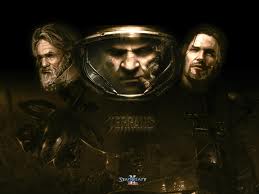
Tyler F - Posts: 3420
- Joined: Mon Aug 27, 2007 8:07 pm
I miss shortswords
and throwing weapons
and spears
and crossbows
and rare matierials actually being rare
and the majority of the spells I used to use
and a skill to increase my jump hight
and a skill to increase my running speed
and attributes
and throwing weapons
and spears
and crossbows
and rare matierials actually being rare
and the majority of the spells I used to use
and a skill to increase my jump hight
and a skill to increase my running speed
and attributes
absolutely.
i like more of everything. more depth and customizable options. more meaning and consequence.
not less. not dumbed-down. not streamlined and more 'accessible.'
i want a mature and complex and difficult game.
-
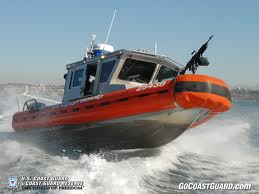
Liv Brown - Posts: 3358
- Joined: Wed Jan 31, 2007 11:44 pm
No Short Swords
No Stabbing
No STR, AGIL
No acrobatics
etc.. etc...
If we list all the things there were removed or dumbed down from Morrowind, we'd run out of internets
No Stabbing
No STR, AGIL
No acrobatics
etc.. etc...
If we list all the things there were removed or dumbed down from Morrowind, we'd run out of internets

-

Jonathan Windmon - Posts: 3410
- Joined: Wed Oct 10, 2007 12:23 pm
Hi - going to respectfully disagree. No need to believe what I say as there is lots if interesting info on the net if you want to learn more.
Rapiers were not lighter than one handed medieval swords. They weighed about the same. It was the weight distribution that was radically different with the weight of the rapier shifted towards the hilt. Rapiers were never meant to face armored opponents. Rapiers were personal arming swords and were not generally used on the battlefield. Not enough stopping power.
The two handers to which you refer would be more 15th/16th century weapons. They would be heavier (up to 7 lbs) and would be used for all sorts of things - against cavalry, a pike wall, etc. These were not medieval weapons.
Rapiers were not lighter than one handed medieval swords. They weighed about the same. It was the weight distribution that was radically different with the weight of the rapier shifted towards the hilt. Rapiers were never meant to face armored opponents. Rapiers were personal arming swords and were not generally used on the battlefield. Not enough stopping power.
The two handers to which you refer would be more 15th/16th century weapons. They would be heavier (up to 7 lbs) and would be used for all sorts of things - against cavalry, a pike wall, etc. These were not medieval weapons.
Oh I don't claim to be an expert either
 I picked up a katana once, and it was heavy. Took both hands to lift the blade. And I'm not weak. But that was a katana, not a long sword or rapier, and it was a reproduction of a katana...the edge wasn't sharp. The blacksmith said that was the only difference...but he would wouldn't he? Some blacksmith at a fair. But, that is beside the point
I picked up a katana once, and it was heavy. Took both hands to lift the blade. And I'm not weak. But that was a katana, not a long sword or rapier, and it was a reproduction of a katana...the edge wasn't sharp. The blacksmith said that was the only difference...but he would wouldn't he? Some blacksmith at a fair. But, that is beside the point  What I've read before, as I stated, could be wrong. And I could have mis-read it. But here's the thing...
What I've read before, as I stated, could be wrong. And I could have mis-read it. But here's the thing...Have you ever picked up 1.5 meters of steel? It weighs ore than 3lbs
 That is modern steel. Medieval steel is going to be heavier, and more brittle. I still believe the medieval swords were heavier than 3lbs
That is modern steel. Medieval steel is going to be heavier, and more brittle. I still believe the medieval swords were heavier than 3lbs  3lbs is really, very light. I believe that soldiers were just stronger then, because they were farmers and did nothing but physical labor all day long. And I also believe there wasn't any fance "sword play" in battles. I think most soldiers just ran up and started hacking at you with the blade. This is medieval Europe we're talking about. No Japan or China. There was no such things as "martial arts" in France or Italy or Germany. There were peasants who were given cheap swords, that broke easily at were often rusty besides.
3lbs is really, very light. I believe that soldiers were just stronger then, because they were farmers and did nothing but physical labor all day long. And I also believe there wasn't any fance "sword play" in battles. I think most soldiers just ran up and started hacking at you with the blade. This is medieval Europe we're talking about. No Japan or China. There was no such things as "martial arts" in France or Italy or Germany. There were peasants who were given cheap swords, that broke easily at were often rusty besides.The concept that is portrayed in nearly all the fiction that uses it, is that there were skilled swordsman. But this is a romance drawn from the modern romances of "martial arts" and the sport of fencing which uses very light "weapons", that are more like gaming utensils. Tennis rackets. Hockey sticks. Golf clubs. Not in size or weight, but purpose. But fencing developed in the renaissance.
I'm saying iron is heavy. Steel is heavy. And suggesting that, while I'm sure some were better than others, and there was a concept of "best" swordsman, the kind of artistry displayed in fiction/film/video didn't really exist.
-

Robert Garcia - Posts: 3323
- Joined: Thu Oct 11, 2007 5:26 pm
68 posts
• Page 2 of 3 • 1, 2, 3
